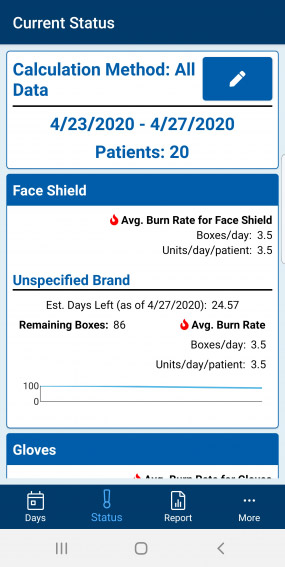With critical shortages of personal protective equipment during the pandemic and a manufacturing industry that can't keep up with the staggering demand from healthcare organizations, leaders of outpatient surgical facilities are using nimble and unorthodox thinking to ensure their staffs have the gear they need to protect themselves and their patients.
- Smart ordering strategies. The pandemic made "normal" purchasing practices all but obsolete. Some facilities ordered the same amount of PPE, regardless of case volume. "Looking back, one thing we did right was to continue ordering the same amount of PPE during the period when we were only performing cases that were deemed emergent," says Greg DeConciliis, PA-C, CASC, administrator at Boston Out-Patient Surgical Suites, Waltham, Mass. "That allowed us to build up a good supply for when we reopened."
The idea came from the facility's PPE vendor, an invaluable resource Mr. DeConciliis says facility leaders should lean on during the pandemic.
Keeping abreast of the trends in other countries and making critical purchasing decisions early on helped some facilities weather the storm.
"We realized well before the virus hit the U.S. that the supply chain would most likely be affected due to the virus shutting down areas of China —where the vast majority of our supplies were manufactured," says Dan Stannard, RN, CASC, administrator, at Red Hills Surgical Center, in Tallahassee, Fla. "We decided it would be worth the money to buy extra supplies in January and February — just in case. That put us way ahead of the game when the shortages hit."
Having proper PPE on hand is critical, but you don't want to go overboard and create a stockpile you'll never wind up never using. So what's the sweet spot for purchasing? "We currently have enough PPE to maintain a three- to five-week supply — but we're not stockpiling to have enough for six months or a year," says Robert S. Bray, Jr., MD, a board-certified neurological spine surgeon and the CEO and founder of DISC Sports & Spine Center in Newport Beach, Calif. "Stockpiling means other facilities won't have the PPE they need when they need it most."
Dr. Bray recommends making sure your main supply chain provides adequate levels of PPE, but also suggests having a couple back-up options available so you're not relying on a single vendor.
- Secure storage and rationing. Facilities stretched PPE levels through the early months of the pandemic by limiting the amount of staff who had access to it — and rationing it as effectively as possible. "One of the most important things we did was put our PPE in a secure location that has limited access," says Cherokee Gonzalez, RN, BSN, director at Florida Medical Center in Tampa. "Some of the charge nurses are responsible for rationing it to the staff. One location has everything but the masks."
To manage mask supplies, Ms. Gonzalez took the secure location concept a step further. "They're kept in my office, which now doubles as a PPE distribution center," she says. "I'm surrounded by boxes that might cave in on me, but it's what we have to do."
Harsh as it may sound, locking your PPE away from staff is a strategy Mr. DeConciliis agrees with. "Pull your surplus out of your general storage area and lock it up so people don't use too much of it at once," he says.
- Responsible reuse. Much has been said of the reuse of N95s during the pandemic, a strategy the CDC itself endorsed due to nationwide shortages. Of course, the agency's guidelines on the reuse of N95s are meant to be followed to the letter (osmag.net/QQHju2). Limited reuse is permitted when there is a known shortage of masks after conventional and contingency capacity strategies have been implemented, according to the CDC. The CDC says five N95 masks can be issued to individual staff members for reuse. Staff members can wear one mask per day and store it in a breathable paper bag with a minimum of five days between uses, according to the CDC, which recommends limiting the number of repeated donnings to no more than five per mask.
.svg?sfvrsn=be606e78_3)

.svg?sfvrsn=56b2f850_5)